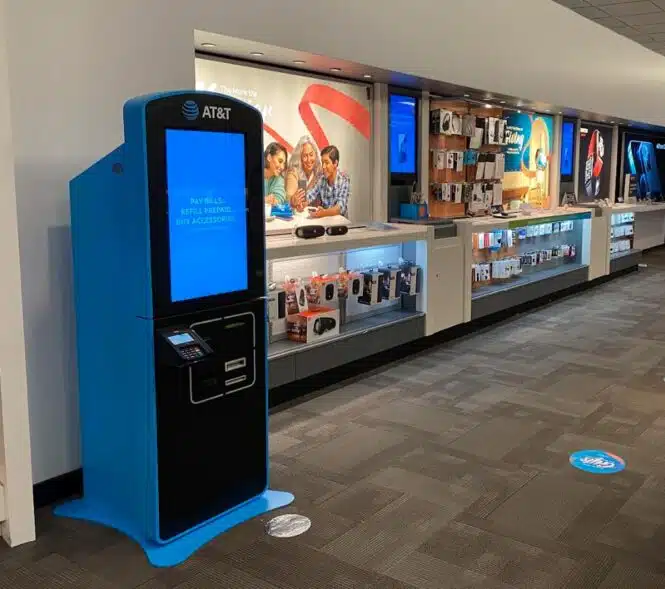Kiosks IO
Introduction
Electronic kiosks have become an integral part of our modern world, revolutionizing the way businesses and organizations interact with customers and streamline their operations. These interactive self-service machines, equipped with advanced technology, have found applications across various industries, including retail, hospitality, healthcare, transportation, and more. In this comprehensive exploration, we will delve into the world of electronic kiosks, highlighting their benefits, features, and the role they play in enhancing customer experiences and operational efficiency.
Benefits of Electronic Kiosks
- Enhanced Customer Experience
Electronic kiosks are designed to provide a seamless and convenient experience for customers. They allow users to independently access information, make transactions, and complete tasks without the need for human intervention. This self-service capability reduces waiting times and empowers customers to take control of their interactions, leading to increased satisfaction.
- Improved Efficiency
One of the primary benefits of electronic kiosks is their ability to streamline operations. They can handle routine tasks such as ticketing, check-ins, order placements, and payments, allowing businesses to allocate human resources more efficiently. This results in faster service delivery and reduced labor costs, ultimately enhancing overall operational efficiency.
- Cost Savings
Electronic kiosks offer a cost-effective alternative to traditional manned services. By automating routine tasks, organizations can reduce staffing requirements and the associated expenses, such as wages, benefits, and training. Over time, these cost savings can have a significant impact on the bottom line.
- Increased Revenue
For businesses in various sectors, electronic kiosks can be a revenue-generating tool. For instance, in the retail industry, self-service kiosks enable upselling and cross-selling by suggesting complementary products or offering discounts. Similarly, in the hospitality sector, interactive kiosks can promote special services, spa treatments, or dining options, contributing to increased revenue.
- Data Collection and Analysis
Electronic kiosks gather valuable data about customer preferences and behaviors. This data can be used for targeted marketing campaigns, product development, and operational improvements. Understanding customer trends and preferences allows businesses to make data-driven decisions and tailor their offerings to meet customer demands more effectively.
- 24/7 Accessibility
Electronic kiosks are available round-the-clock, providing customers with access to information and services at any time of the day or night. This accessibility is particularly valuable in sectors like transportation and healthcare, where services are needed outside regular business hours.
Features of Electronic Kiosks
- Touchscreen Interface
Most electronic kiosks feature user-friendly touchscreen interfaces. This intuitive design allows users to navigate through options, input information, and complete transactions with ease. The interactive nature of the touchscreen enhances user engagement and simplifies the overall experience.
- Payment Processing
Many electronic kiosks are equipped with secure payment processing capabilities, enabling users to make purchases, pay bills, and conduct financial transactions. These kiosks can accept various payment methods, including credit/debit cards, cash, mobile payments, and contactless options.
- Customizable Software
Electronic kiosks often run on customizable software that can be tailored to specific business needs. This flexibility allows organizations to adapt the kiosk’s functionality to their unique requirements, whether it’s for check-in, ordering, information dissemination, or wayfinding.
- Remote Monitoring and Management
To ensure smooth operation and maintenance, electronic kiosks are equipped with remote monitoring and management capabilities. This allows businesses to track the status of kiosks, perform software updates, troubleshoot issues, and gather usage data remotely.
- Integration with Other Systems
Electronic kiosks can seamlessly integrate with other systems and databases, such as inventory management, customer relationship management (CRM), and enterprise resource planning (ERP) systems. This integration facilitates real-time data exchange and enhances the kiosk’s capabilities.
- Multi-Language Support
To cater to diverse customer bases, electronic kiosks often offer multi-language support. Users can select their preferred language for interactions, ensuring that language barriers do not hinder accessibility and usability.
- Accessibility Features
Electronic kiosks are designed with accessibility in mind. They often include features such as adjustable screen heights, braille labels, and text-to-speech functionality to accommodate users with disabilities and ensure equal access to services.
- Security Measures
Security is paramount for electronic kiosks, especially when handling financial transactions and sensitive data. These kiosks typically incorporate encryption, tamper-resistant hardware, and security protocols to protect user information and prevent unauthorized access.
The Role of Electronic Kiosks in Different Industries
- Retail
In the retail sector, electronic kiosks serve as valuable tools for self-checkout, price checking, product information lookup, and loyalty program enrollment. They enhance the shopping experience by reducing wait times and empowering customers to find information and complete purchases independently.
- Healthcare
Electronic kiosks are transforming the healthcare industry by streamlining patient check-in processes, appointment scheduling, and payment collection. Patients can use kiosks to update their information, reducing paperwork and administrative burdens on medical staff.
- Transportation
Airports, train stations, and bus terminals utilize electronic kiosks for ticketing, baggage check-in, and flight information display. These kiosks expedite the check-in process, reduce lines at counters, and provide travelers with up-to-date information.
- Hospitality
Hotels and resorts employ electronic kiosks for guest check-in and check-out, key card issuance, and concierge services. This allows guests to bypass front desk queues and access their rooms more quickly, enhancing their overall stay.
- Entertainment
Electronic kiosks are found in entertainment venues like cinemas, theme parks, and museums. They facilitate ticket purchases, provide event information, and offer interactive experiences to engage visitors and improve their overall enjoyment.
Conclusion
Electronic kiosks have become indispensable tools in various industries, offering a wide range of benefits and features that enhance customer experiences and improve operational efficiency. These self-service machines empower users, reduce costs, generate revenue, and provide valuable data for decision-making. As technology continues to advance, electronic kiosks will likely play an even more significant role in shaping the way businesses and organizations interact with their customers and clients, ultimately driving innovation and convenience in our modern world.
